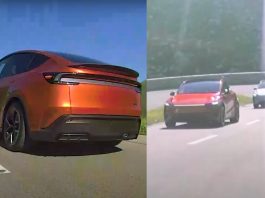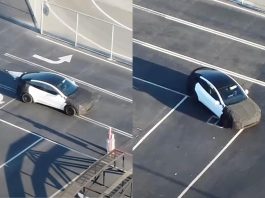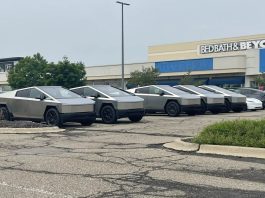In the ever-evolving world of electric vehicles, innovation remains key to advancing sustainability and convenience for users. A remarkable example of such ingenuity is witnessed in a groundbreaking project involving a Tesla Model Y. This project features a folding solar array system designed to transform the way electric vehicles harness solar power for charging.
The significance of this initiative within the EV community cannot be overstated. It represents a step towards greater energy independence for EV owners, reducing reliance on conventional charging stations.
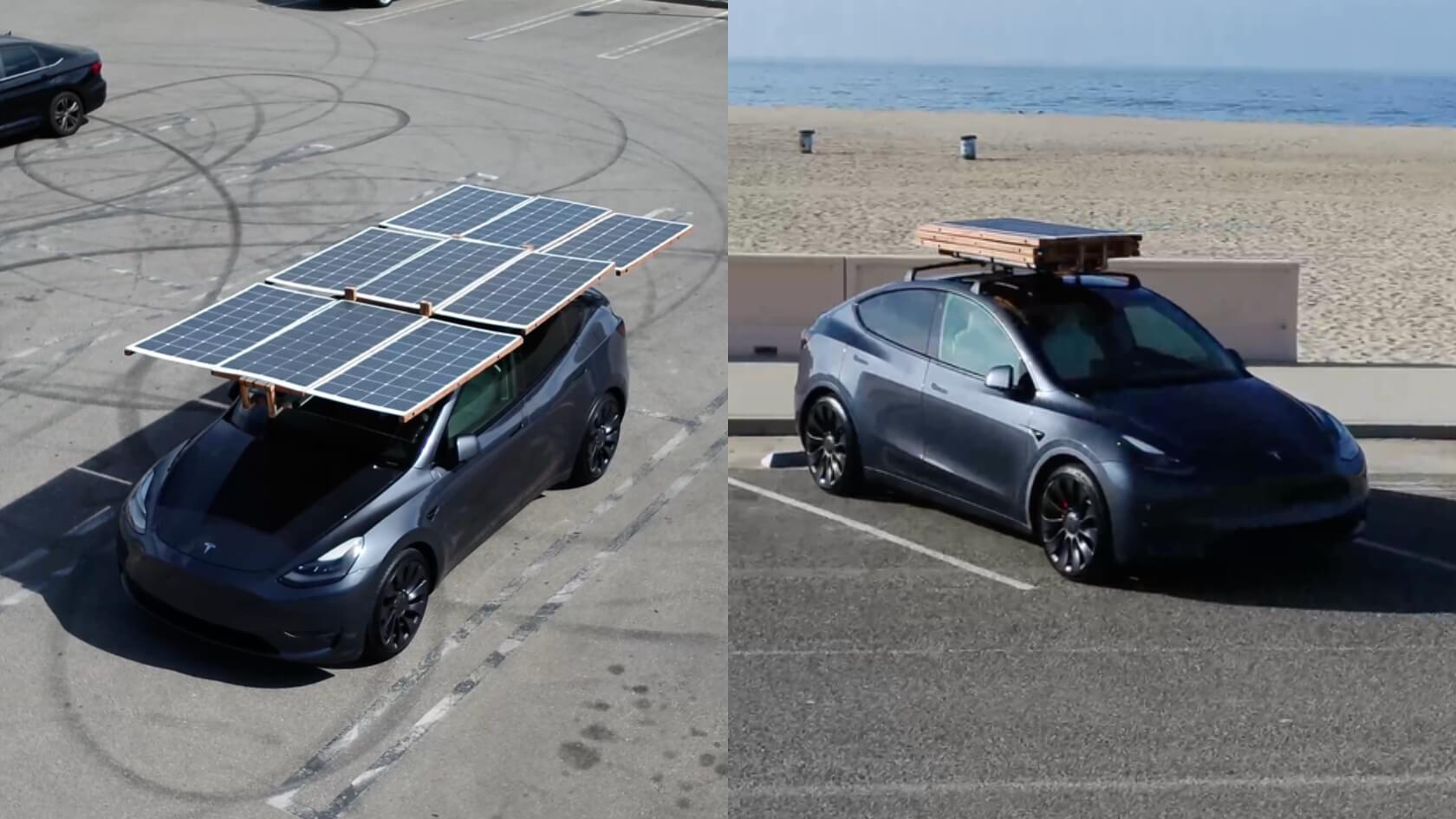
Table of Contents
Tesla Solar Panel Car Roof: Folding Solar Array for On-the-Go Charging
The Model Y owner created a solar panel car roof capable of generating between 2000W to 4000W of power. This capacity translates into a significant range extension for the vehicle, offering an additional 20 to 60 miles of travel per day solely from solar energy. Such a range extension not only enhances the practicality of the Tesla Model Y but also underscores the potential of solar power in revolutionizing EV charging.
The development of this solar array system spanned over two years and the primary objective was to create a scalable and efficient solar charging solution for electric vehicles.
Key Features and Design
Telescoping Carbon Fiber Tubes
The use of telescoping carbon fiber tubes in the solar array system is a hallmark of innovative design. These tubes were chosen for their exceptional strength-to-weight ratio, a crucial factor for maintaining the Tesla Model Y’s structural integrity. Carbon fiber ensures that the solar panels can expand and contract without adding significant weight or bulk to the vehicle. This choice not only adheres to the Tesla Model Y’s maximum roof weight capacity but also ensures ease of handling and deployment of the solar array.
Efficient Energy Conversion
At the core of the system’s efficiency lies the application of thermo-electric principles. The project innovatively incorporates methods to cool the solar panels, such as spraying the underside with water droplets. This cooling technique combats the natural efficiency drop in solar panels due to heat, thereby enhancing the conversion rate of sunlight to electrical power. Such an approach demonstrates a keen understanding of the nuances in solar energy harvesting, ensuring maximum yield from the available solar panels.
Aerodynamic and Lightweight Design
The next iteration of the solar array system – Beta2 focuses heavily on reducing aerodynamic drag. By lowering the height to just 6 inches and utilizing a full carbon fiber construction, Beta2 aims to seamlessly integrate with the Tesla Model Y. This thoughtful design minimizes the impact on the vehicle’s aerodynamics, an essential factor in maintaining efficiency and range. The sleek and compact design of Beta2 is not just aesthetically pleasing but also functionally superior in maintaining the vehicle’s performance.
Technical Insights
Power Conversion
The solar array system includes a critical component for power conversion: the DC to AC inverter. This aspect is pivotal as the Tesla Model Y, like most EVs, is equipped with an AC charging system. The conversion from DC (generated by the solar panels) to AC needs to be efficient to maximize the charging potential. The system has been designed with an emphasis on minimizing energy loss during this conversion process.
The choice between a 12v and 48v inverter, and the configuration of series or parallel connections, were meticulously considered to optimize efficiency and compatibility with the Tesla Model Y’s charging system.
Battery Storage
An integral part of this solar charging system is its custom Lithium Ferro Phosphate (LFP) battery pack. LFP batteries were chosen for their safety, longevity, and thermal stability, which are crucial in the variable conditions a vehicle roof is exposed to. This custom battery pack acts as an intermediary energy reservoir, ensuring a stable and continuous supply of power to the vehicle’s main battery, even when solar energy is intermittently available.
Impact on Vehicle Performance
One critical aspect of this design is its minimal effect on the vehicle’s performance. The custom-made aluminum roof rack and the inclusion of wind and vortex breakers ensure that the solar array integrates seamlessly with the vehicle, minimizing drag.
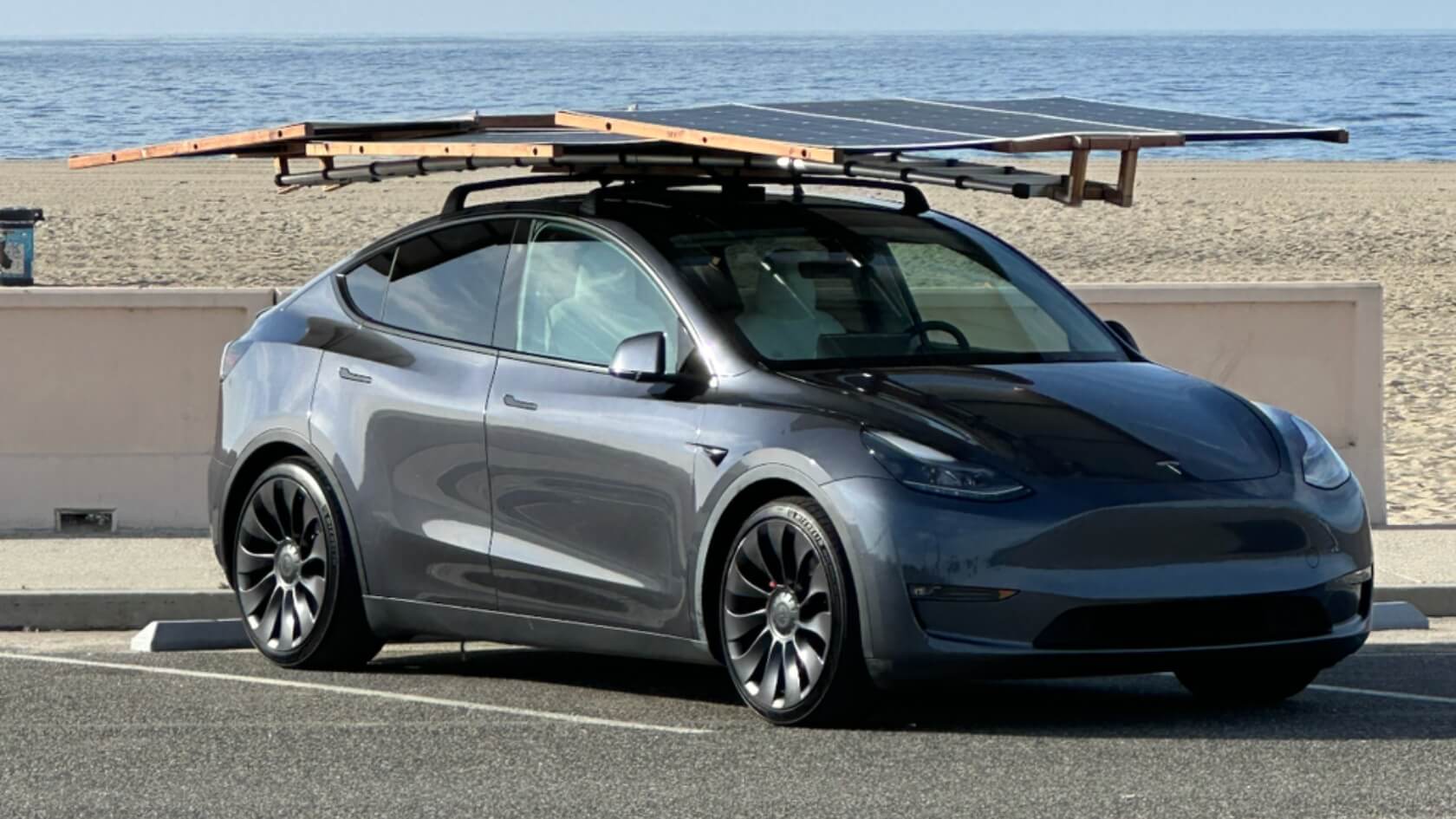
Tesla Solar Panel Car Roof Cost and Payback Period
The pioneering solar array project for the Tesla Model Y initially entailed considerable investment. The development cost, encompassing research, materials, and labor, reached around $50,000. However, this high upfront cost reflects the project’s innovative nature and the premium materials used, like carbon fiber. Looking ahead, the project aims to significantly reduce costs. The goal is to bring the bill of materials down to approximately $2,000 for the 2kW model and $4,000 for the 4kW model. This cost reduction strategy is crucial for making the technology more accessible and affordable for a broader range of EV enthusiasts.
The payback period is a key factor in evaluating the economic feasibility of any green technology. For this solar array system, the initial payback period is estimated at around 4 years, considering the current cost structure. However, with targeted cost reductions, the payback period could be reduced to as little as 1.5 years. This improvement would make the investment in the solar array significantly more attractive for Tesla Model Y owners, offering both environmental and economic benefits.
The creator has made 3D-printed parts and blueprints available online. This open-source approach allows other EV enthusiasts to build their own solar arrays, contributing to the wider adoption of sustainable energy practices.
Final Thoughts
This solar array project is a substantial step forward in promoting sustainable energy use in the transportation sector. By harnessing solar power, Tesla Model Y owners can reduce their reliance on grid electricity, much of which is still generated from fossil fuels. This shift to a cleaner energy source for EV charging helps in reducing the carbon footprint and paves the way for a more sustainable future.
The potential impact of this project on the EV market and renewable energy integration is significant. As more EV owners adopt solar charging solutions, there could be a considerable reduction in the demand for grid power. Furthermore, this technology could inspire further innovations in integrating renewable energy sources with EVs, potentially leading to new designs and applications in the automotive sector.

